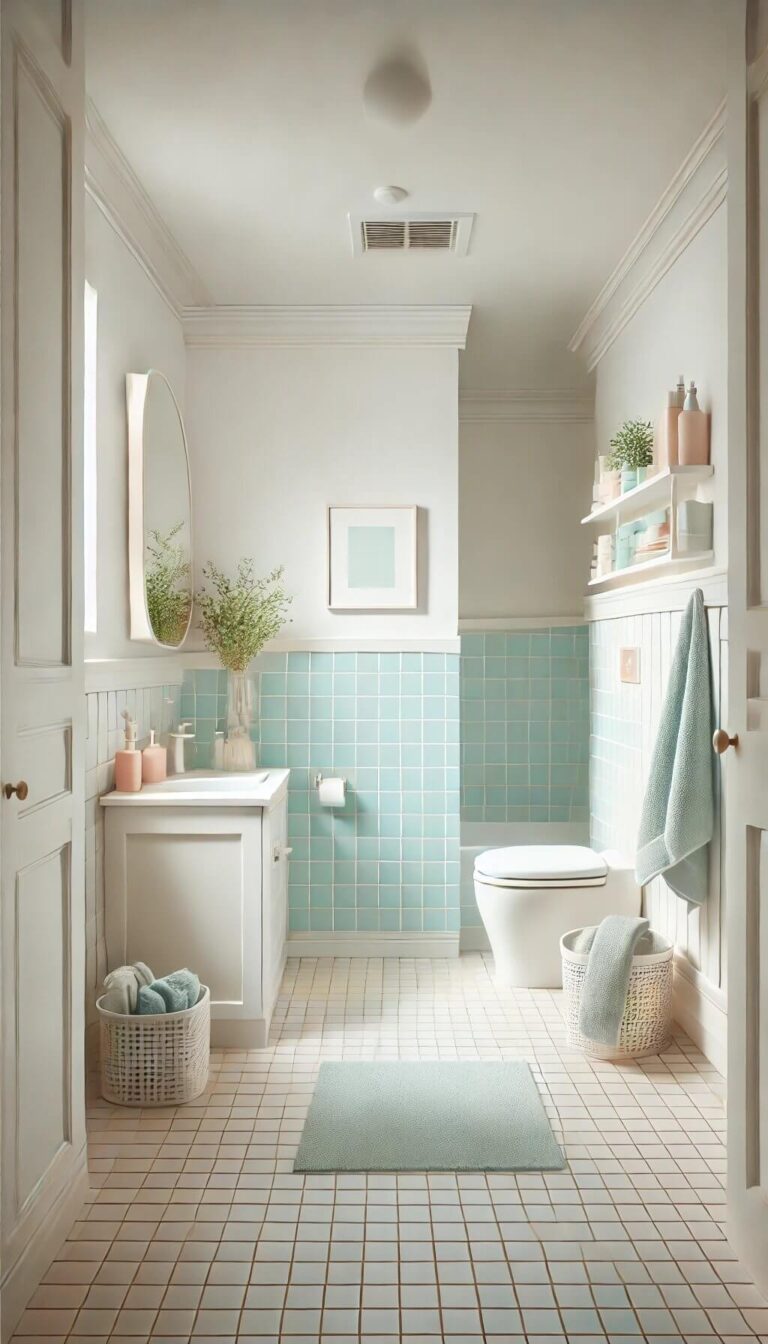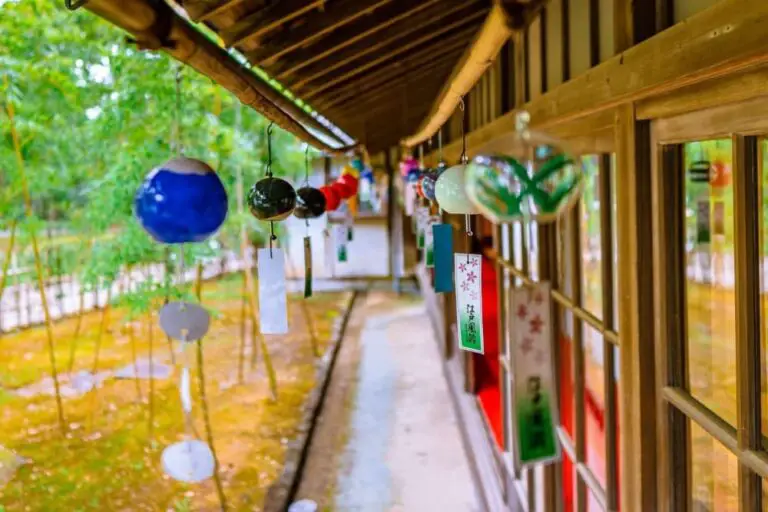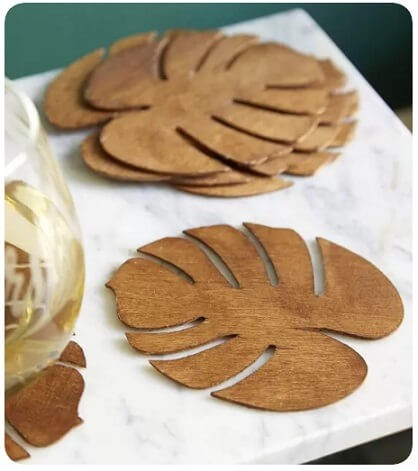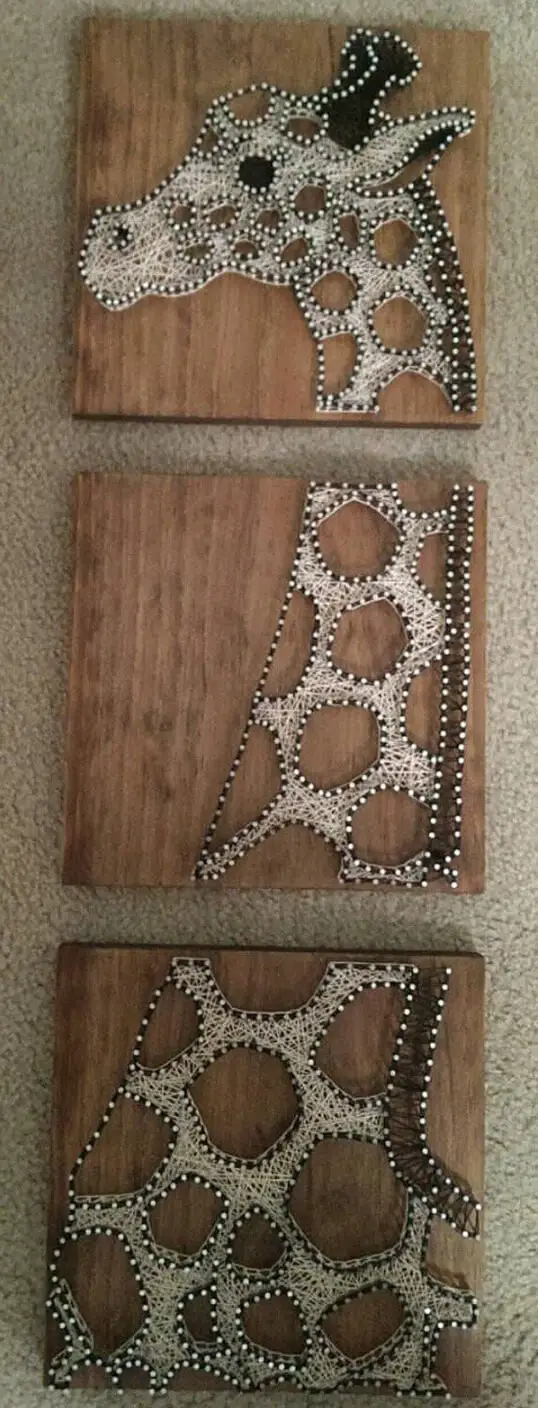Best Feng Shui Bedroom Colors To Increase Energy And Attract Love
Are you looking to attract love and romance into your life? If so, the right feng shui bedroom colors can play a significant role. In this article, we’ll delve into the best colors for attracting love and provide tips on how to incorporate them into your bedroom design to create a relaxing and inviting space. By doing so, you can spice up your love life and cultivate a deeper connection with your partner.
The 16 feng shui bedroom colors that are perfect for attracting love and romance include black, brown, dark blue, earthy yellow, aqua blue, gray, green, navy blue, cream or ivory, orange, peach, pink, purple, red, teal, and white. These colors can be used to create a harmonious and balanced space that fosters a sense of calmness and serenity. When choosing the best feng shui bedroom colors for your specific space, it’s essential to consider the direction your bedroom faces.
For example, east-facing bedrooms benefit from earthy yellow, brown, or orange hues, while south-facing bedrooms are ideal for dark blue, navy blue, or purple shades. Similarly, north-facing bedrooms can be enhanced with aqua blue, teal, or white colors, and west-facing bedrooms respond well to gray, cream, or beige tones. In addition to the direction of your bedroom, it’s also important to balance yin and yang energies by incorporating complementary colors.
For instance, a master bedroom might benefit from calming earthy tones, while a guest bedroom could be enhanced with stimulating aqua blue or teal shades. Ultimately, the key to creating a feng shui bedroom that attracts love and romance is finding a harmonious balance of colors that resonate with your personal energy and intentions.
Best Feng Shui Bedroom Colors.
With its rich history spanning thousands of years, feng shui is an ancient practice that seeks to harmonize the energies within a given space by thoughtfully arranging furniture and other elements. A crucial aspect of this art is the selection of colors, which play a significant role in influencing the flow and balance of energy within your bedroom. The right color palette can greatly enhance the overall ambiance and well-being of your sanctuary.
Some of the most effective colors for creating a harmonious feng shui bedroom include
Black.
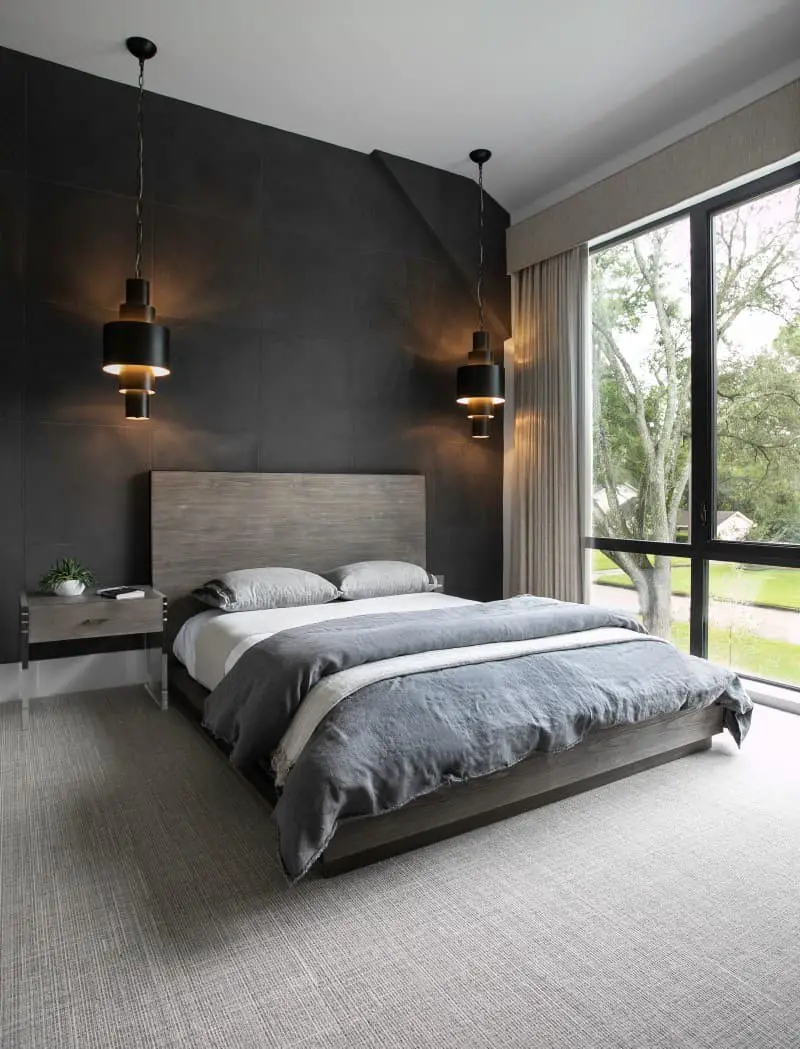
In Feng Shui philosophy, black is believed to possess a unique energy that promotes protection and grounding. This property makes it an ideal choice for bedrooms, where it can foster feelings of security and tranquility. Additionally, when paired with other colors like white or blue, black can create a harmonious and calming ambiance, making it an excellent color combination for a restful retreat.
Brown.
In the realm of Feng Shui, brown is deeply connected to the earth element, imbuing spaces with a sense of warmth, stability, and security. This grounding energy can be particularly effective in bedrooms, where it fosters a state of tranquility and relaxation, making it an ideal choice for promoting restful sleep.
The versatility of brown means you can select from a range of shades to achieve balance in your space, whether you opt for the rich tones of dark chocolate, the softness of light beige, or the subtle nuance of taupe.
Dark blue.
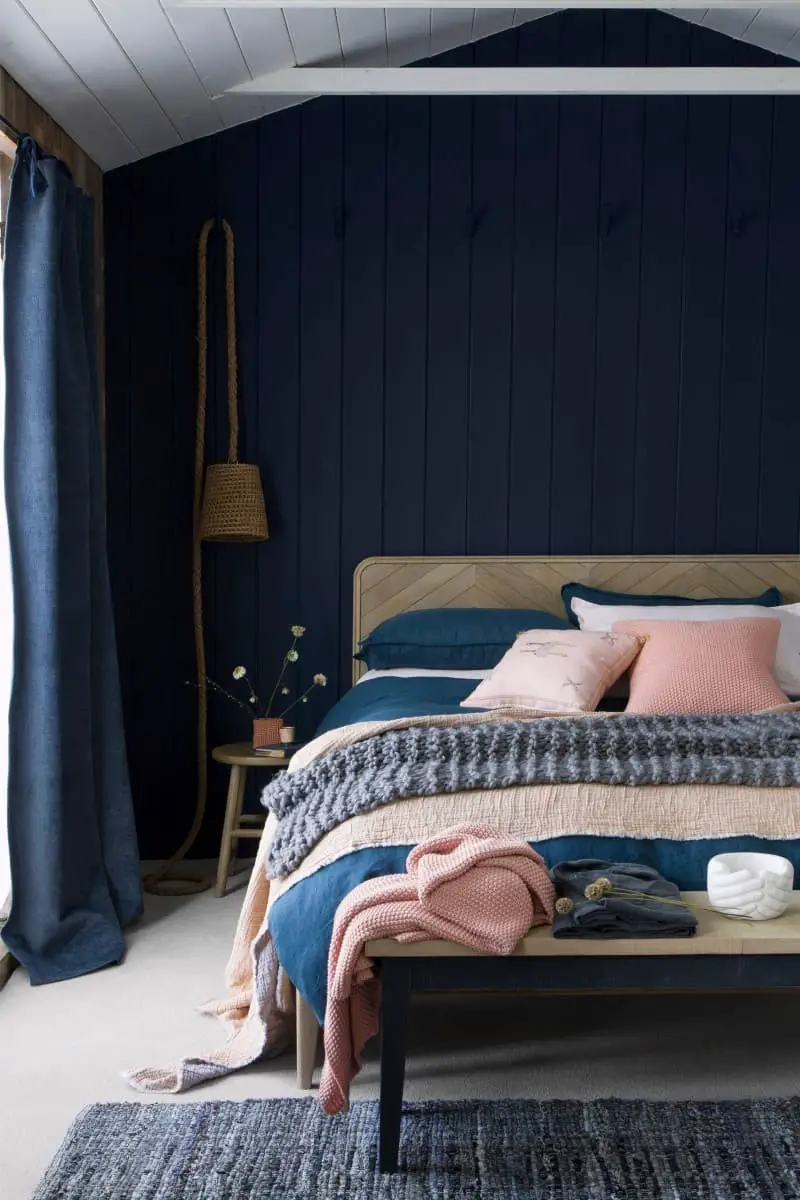
Incorporating dark blue into your bedroom design can have a profound impact on the space’s ambiance. This soothing hue is often associated with trust and loyalty, making it an ideal choice for a room where you retreat to relax and rejuvenate. In fact, dark blue has long been considered the traditional feng shui color for bedrooms, as it’s believed to promote relaxation and peaceful sleep.
When used as a dominant color in the room, dark blue can create a calming and serene atmosphere that invites you to unwind and drift off to dreamland with ease. To strike the perfect balance, consider pairing your dark blue walls with white or light gray furniture for a harmonious and inviting space.
Earthy Yellow.
Incorporating earthy yellow into your feng shui bedroom design can have a profound impact on the space’s ambiance. This warm and inviting hue has the ability to bring light, joy, and a sense of calmness to the room. It’s versatile nature allows it to be used as a dominant color on walls or as an accent through curtains, bedding, and other decorative elements.
When paired with neutral shades such as white, beige, or light gray, earthy yellow can create an even more serene atmosphere that promotes relaxation and mental clarity. This unique combination not only adds visual interest but also has the ability to stimulate mental alertness, making it an excellent choice for bedrooms where rest and rejuvenation are paramount.
Aqua Blue.
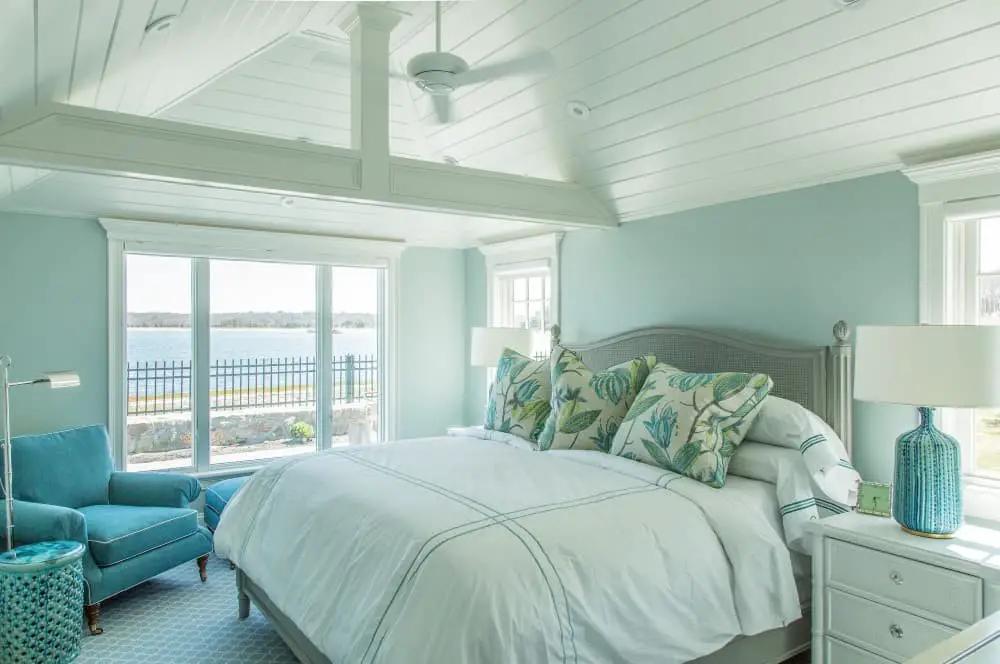
Incorporating aqua blue into your feng shui bedroom design can have a profound impact on promoting relaxation and tranquility. As a calming force, this soothing color helps to reduce stress levels while simultaneously fostering creativity. To harness the full potential of this energy, consider painting your walls or adorning bedding with aqua blue hues. Alternatively, use it as an accent color in throw pillows or window treatments for a subtle yet effective pop of color.
For added sophistication and a cozy atmosphere perfect for restful sleep, pair aqua blue with darker shades such as midnight blues and dark greens. This harmonious combination creates a peaceful ambiance that’s sure to promote a restful night’s sleep.
Gray.
Gray’s versatility makes it an excellent choice for bedrooms. Its calming properties create a serene atmosphere, perfect for promoting relaxation. Furthermore, gray effectively balances other colors, fostering harmony and equilibrium in the space. When used thoughtfully, gray can craft a warm and inviting ambiance, ideal for unwinding. Moreover, lighter shades of gray serve as a neutral backdrop, allowing you to introduce bold and revitalizing hues elsewhere in the room.
Overall, gray is an excellent neutral option for incorporating feng shui bedroom colors, offering a sense of calm and serenity.
Green.
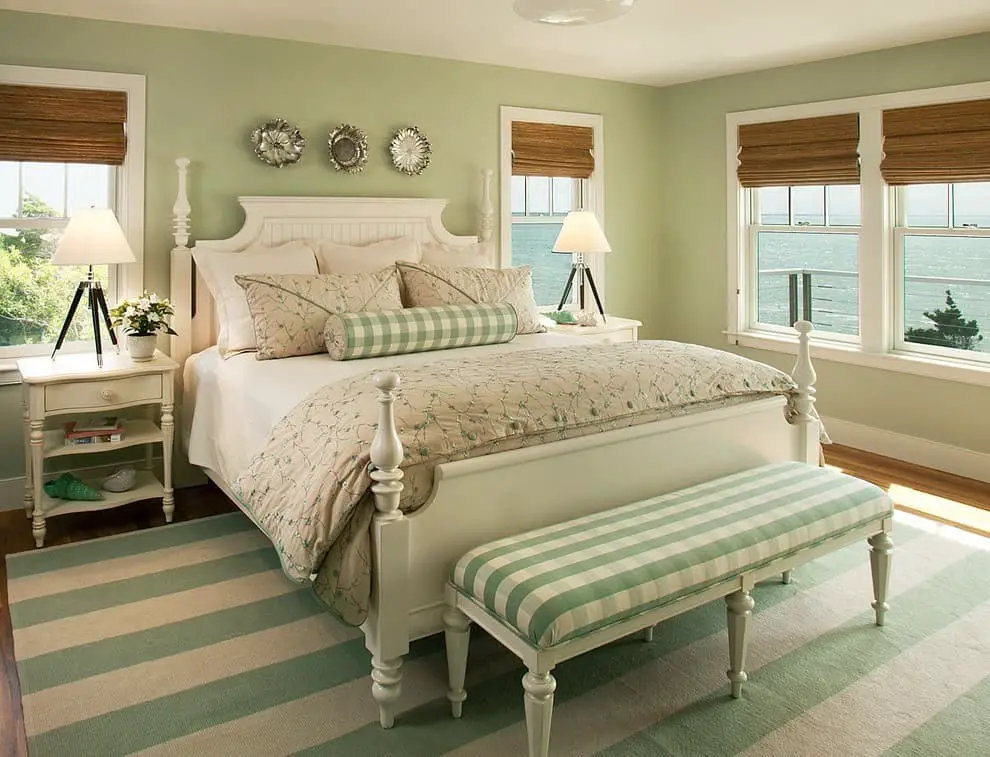
The bedroom is where we retreat from the world to recharge, and Feng Shui suggests that the calming hue of green is an ideal choice for creating a restful atmosphere. Symbolizing renewal and balance, this soothing color can help promote serenity and tranquility in your personal sanctuary.
What’s more, green pairs harmoniously with other colors like white, yellow, blue, and brown to create a sense of cohesion and calmness.
For added luxury, incorporate gold accents to give your bedroom a touch of opulence. To modernize the space, experiment with different shades of green and combine them with various textures such as silk, cotton, and velvet for added depth.
To bring an extra layer of life and energy into your bedroom, consider adding some plants to the space. Not only will they purify the air and boost oxygen levels, but they’ll also add a touch of natural beauty to the room.
Navy blue.
For centuries, dark navy blue has been a staple in Feng Shui practices, particularly in bedroom design, where it’s used to cultivate a sense of serenity. This calming hue can be incorporated as an accent wall or blended with lighter shades of blue, green, and white to create a harmonious atmosphere. Beyond its soothing effect, navy blue is also believed to tap into deeper aspects of the self, such as courage, knowledge, and wisdom, evoking feelings of strength, stability, and inner guidance.
Cream or ivory.
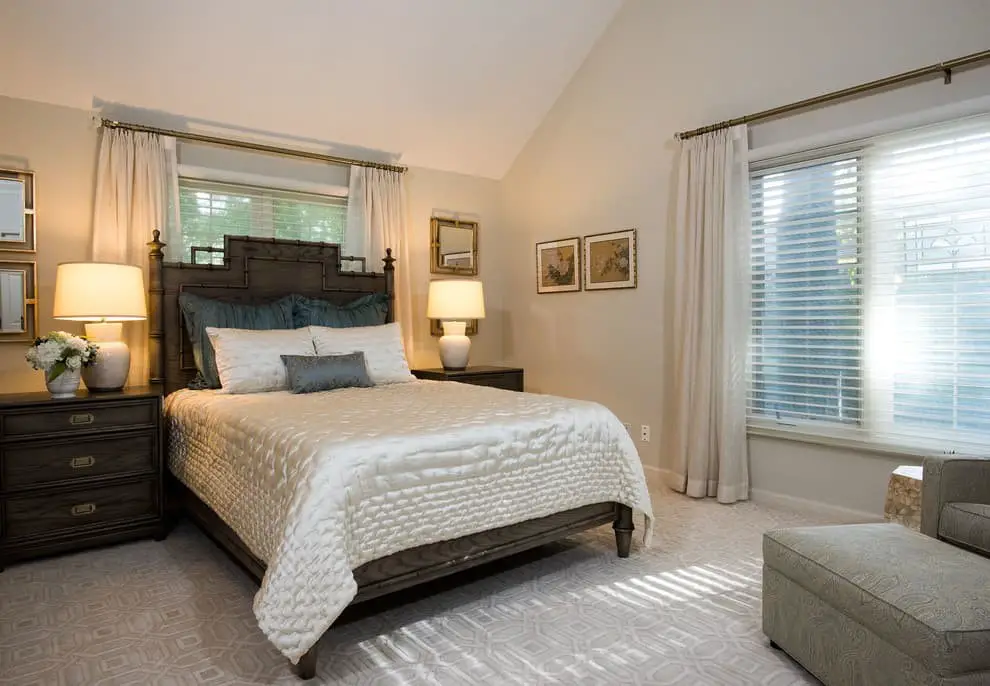
In the realm of bedroom design, the hues cream and ivory are often touted for their calming effects, fostering a sense of inner peace and balance that invites relaxation and rejuvenation. As soothing colors, they’re thought to create an environment that encourages restful sleep, allowing individuals to unwind and recharge. Moreover, these gentle tones are linked to notions of clarity and light, which can further contribute to feelings of serenity and peacefulness.
Orange.
Orange embodies the essence of joy, warmth, and energy, making it an ideal hue for promoting effective communication and nurturing relationships. This vibrant color can transform a bedroom into a stimulating space that sparks creativity and fosters a sense of excitement. Furthermore, orange has the ability to bring out the best in those who inhabit this space, encouraging meaningful interactions and deeper connections – particularly beneficial for couples seeking to strengthen their bond.
Peach.
In traditional Feng Shui practices, peach is revered as the colour of harmony and balance, fostering an aura of calmness and inner peace within its surroundings.
This soothing hue is particularly beneficial in bedrooms, whether shared by couples or enjoyed solo, as it encourages positivity, comfort, and a sense of serenity. To create a more understated atmosphere, consider pairing peach with subtle shades like pale blue or green, which together evoke a tranquil ambiance.
Pink.
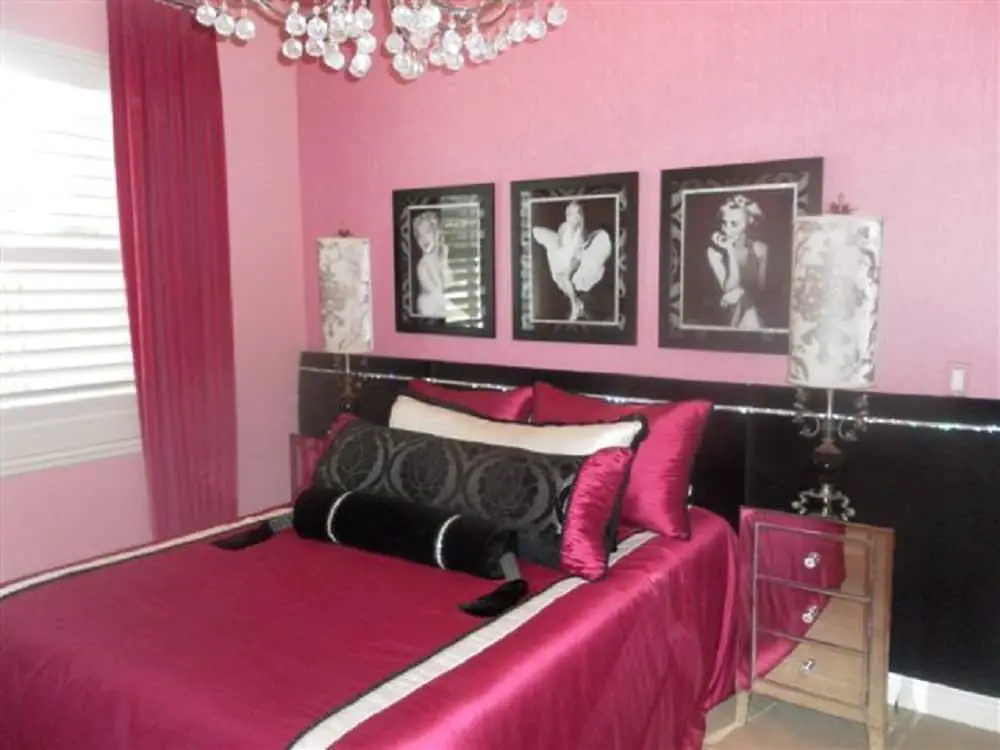
When it comes to bedroom design, the ancient principles of feng shui suggest that pink is an excellent choice. This soothing hue is said to foster feelings of love, peace, and serenity, making it an ideal color for creating a calming atmosphere. Pink’s gentle energy allows it to work harmoniously with other colors like white or cream, promoting relaxation and reducing stress.
In feng shui philosophy, pink is believed to bring about a sense of safety and security, while also encouraging feelings of joy and contentment, making it an excellent choice for bedrooms seeking to promote tranquility and peaceful slumber.
Purple.
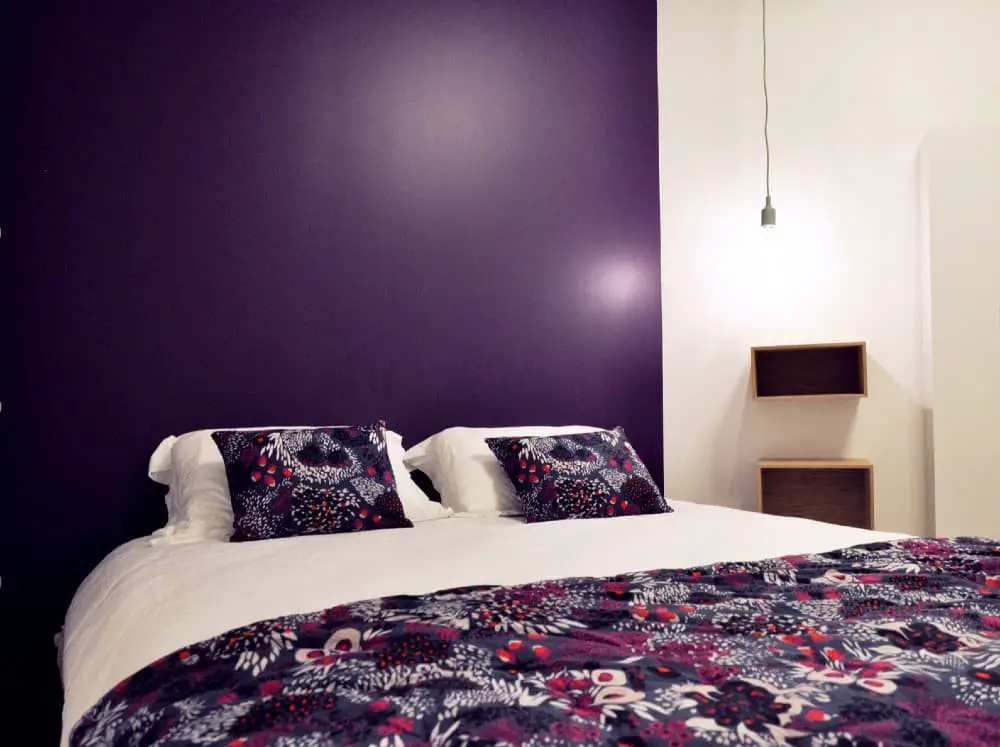
In feng shui, purple is recognized as an influential color for a bedroom, linked to wealth, power, and spirituality. This makes it an ideal choice for those seeking to draw prosperity or foster personal growth. A gentle or rich shade of purple can be used to harmonize with other colors in the room, such as blues and greens, creating a balanced atmosphere. Moreover, its calming nature makes it suitable for bedrooms, promoting relaxation and serenity.
Nevertheless, some individuals may find the hue too energizing, and for those who struggle with sleep, it’s recommended to avoid using purple in their bedroom.
Red.
In the world of feng shui, red is often revered for its potent energies, capable of evoking feelings of passion, energy, and vibrancy in a bedroom setting. This bold color can be particularly beneficial for couples looking to nurture love and intimacy within their relationship. When incorporated thoughtfully, red accents can help foster a sense of closeness and connection between partners.
However, it’s essential to employ restraint when introducing this powerful hue, as excessive use can lead to feelings of tension or anxiety. To strike the perfect balance, consider incorporating subtle touches through throw pillows, bedding, and artwork, allowing the calming effects of these elements to mitigate any potential overwhelming energy.
Teal.
When it comes to choosing a bedroom color scheme, teal is an excellent option that embodies trust and loyalty. This soothing hue is often used to decorate newlywed bedrooms due to its calming energy, which helps create a peaceful atmosphere. Moreover, teal has been known to reduce stress levels and stimulate creativity, making it an ideal choice for individuals seeking inspiration in the comfort of their own space.
White.
In the realm of feng shui, white is an ideal color for crafting a serene and harmonious bedroom environment. By incorporating white into your design, you can create a sense of balance that fosters feelings of tranquility and peacefulness. Furthermore, the reflective properties of white help to amplify available light, giving the illusion of a more expansive space.
How to Choose Your Best Feng Shui Bedroom Colors.
To craft a serene and harmonious bedroom sanctuary, one must thoughtfully select their color palette. Feng shui principles guide us in achieving balance by choosing the most suitable hues for our personal space. In pursuit of this goal, consider the following insights:
When seeking to cultivate relaxation and renewal, turn to calming shades of blue or green. These natural tones possess a soothing quality, perfect for creating a peaceful ambiance.
Avoid vibrant or bright variations of these colors, as they may inadvertently stimulate rather than calm.
For an energizing effect, consider incorporating warm or vibrant tones such as reds, yellows, and oranges. However, be cautious not to overdo it, lest the room become too restless.
To strike a balance between yin and yang energies, explore earthy tones like browns and tans. These calming hues can create a sense of serenity in a bedroom setting.
For a soft and sophisticated look, incorporate shades of gray into your color scheme. Gray possesses an air of luxury and can effectively calm the atmosphere in a bedroom.
Finally, if you wish to utilize light colors without sacrificing warmth or coziness, opt for pastel hues. These gentle tones create a welcoming and peaceful ambiance that is both soothing and inviting.
Bedroom Direction and Feng Shui Color.
Incorporating the principles of Feng Shui into your bedroom design can have a profound impact on the room’s energy and ambiance. A crucial aspect of this is considering the room’s directional orientation, as per traditional Chinese Feng Shui theory. Each room in your home should be aligned with a specific direction to harness its corresponding energy. This includes the bedroom, where east- or west-facing orientations are generally considered ideal.
East-facing bedrooms are said to promote health and vitality, while west-facing rooms foster a sense of calm and relaxation. Furthermore, the colors used in the room play a significant role in shaping its energy. By choosing colors that resonate with the direction your bedroom is facing, you can amplify its benefits and create a harmonious space.
East-Facing Bedrooms.
In feng shui, east-facing bedrooms are revered for their unique benefits. The morning sunlight streaming through these rooms is seen as a powerful symbol of life and vitality. To harness this energy, an east-facing bedroom’s color palette should focus on vibrant yellows, peaches, and greens. These hues will amplify the room’s energetic vibe. For added serenity, incorporate calming tones like light blues, grays, and whites.
Furniture with soft curves will create a cozy atmosphere, while placing the bed near the wall opposite the door ensures balance and stability. It’s essential to leave windows uncovered, allowing natural light to pour in during the day. Mirrors play a crucial role in east-facing bedrooms, as they cleverly reflect the life-giving sunlight. To further enhance this room’s positivity, consider incorporating subtle accessories like wind chimes or small fountains.
South-East Bedrooms.
For those seeking prosperity and abundance in their lives, the South-East direction is an ideal choice for their bedrooms. This area is connected to the Wood element, which embodies growth, vitality, and expansion. The ideal Feng Shui colors for this space are earth tones such as blues, greens, browns, and oranges, which promote a peaceful atmosphere and evoke feelings of abundance.
When selecting a paint color for your bedroom walls in this direction, opt for a light shade to create an open and airy feel. Conversely, avoid using excessive metal furniture or accents, as these may overpower the space. Additionally, maintain a clutter-free environment and ensure sufficient lighting to foster positive energy. The South-East direction is also beneficial for couples seeking to strengthen their bond, as the Wood element fosters openness and communication.
To enhance this atmosphere, incorporate light, natural colors in your decor, and avoid heavy furniture. Soft music, candles, and plants can further contribute to a calming ambiance that encourages connection and bonding.
South-Facing Bedrooms.
For those who work from home or crave a close connection with family members, south-facing bedrooms are an ideal choice. This direction is particularly well-suited for couples and families seeking a harmonious living space. A south-facing bedroom’s energetic vibe can be amplified by decorating the room with red, orange, pink, or yellow hues, which promote strength, courage, and joy.
To further enhance the space’s vitality, incorporate bright and cheerful colors that radiate warmth and positivity. Beyond aesthetics, thoughtful furniture placement is crucial for a south-facing bedroom. Position the headboard against the wall facing south and keep other pieces along the walls to maintain a smooth flow of energy. To add an extra layer of positivity, hang artwork featuring bold, vibrant colors that bring joy and vitality to the space.
South-West Bedrooms.
Incorporating the energies of the South-West direction into your bedroom is believed to attract good fortune and abundance, making it an ideal space for those seeking a career boost or looking to take control of their life. This area is said to promote success and leadership, qualities that can be leveraged when striving for personal growth.
To harness the benefits of this direction, it’s recommended to use earthy tones such as beige, yellow, and brown to create balance in the space.
These calming hues can help ground the energy and invite a sense of serenity into your bedroom. Additionally, blue-green accents may inspire creativity and spiritual growth, making them an excellent choice for those seeking artistic expression or personal fulfillment.
While fire elements like red or orange can be used sparingly to energize the space, it’s essential to exercise caution not to overdo it, as excessive fire energy can lead to chaos and disruption.
By striking a balance between these different energies, you can create a harmonious atmosphere that fosters relaxation and rejuvenation.
Rounded shapes and soft curves can also play a crucial role in shaping the ambiance of your South-West bedroom. By incorporating these gentle forms into your decor, you can cultivate a sense of comfort and welcome, making it an ideal retreat from the stresses of everyday life.
West-Facing Bedrooms.
Transform your west-facing bedroom into a serene retreat by incorporating elements that resonate with the Metal element. Choose calming hues like white, gray, silver, and gold, which foster balance, harmony, and clarity in this space. Avoid introducing mirrors, as they can overwhelm the room with excess energy. Instead, opt for plush furnishings such as a comfortable bed, dresser, and nightstand.
To inject life into your bedroom, consider adding plants or greenery, which will bring nourishing energy and vitality to the space.
North-Facing Bedrooms.
For those seeking a serene atmosphere, north-facing bedrooms are an ideal choice. This orientation has a natural harmony with the element of water, which is reflected in its corresponding color palette. Navy blue, black, grey, and deep blues are just a few examples of hues that can be used to create a calming environment perfect for unwinding and recharging.
North-West Bedrooms.
Incorporating North-West energy into your bedroom design can promote a sense of peace and clarity. This direction is linked to Metal and the color white, making it perfect for creating a calming atmosphere. To achieve this, use white as a base color and add subtle accents with blues or greys. Avoid overwhelming the space by using Earth tones, which can bring a sense of heaviness. Instead, incorporate natural elements like wood furniture and soft textures to ensure comfort.
Mirrors are also welcome in this direction, as they’re associated with wealth, but be sure to position them away from the bed to maintain a restful ambiance.
North-East Bedrooms.
North-east bedrooms possess an unique energy that fosters creative contemplation and inspires a sense of optimism. This directional alignment is particularly beneficial for individuals seeking to manifest their desires and bring success into their lives. The most effective colors to utilize in this bedroom are warm hues such as yellow and orange, which evoke feelings of comfort and positivity.
To further amplify the space’s uplifting energy, incorporating elements of fire can be highly effective. Consider painting one or more walls with a vibrant orange shade, adorning bedding with bright, cheerful patterns, and incorporating gold-toned accessories to create a truly radiant environment.
Yin and Yang Bedroom Color Balance.
When crafting a harmonious bedroom color scheme, it’s essential to consider the ancient principles of Yin and Yang. This philosophical concept posits that two contrasting yet complementary elements should coexist in balance and equilibrium. The Yin aspect embodies softness, serenity, and passivity, while the Yang represents strength, dynamism, and activity.
To create a bedroom color scheme that embodies this harmony, one should combine calming colors from the Yin spectrum, such as blues, greens, and purples, with bold hues from the Yang side, including oranges, yellows, and reds. These complementary colors can be applied to walls or incorporated through accent pieces, furniture, and accessories.
A balanced color scheme can be achieved by using cool tones like blue and green for the Yin aspect and bright, vibrant shades like orange and yellow for the Yang aspect. This equilibrium is inviting and comforting, making it ideal for a bedroom. Furthermore, contrasting textures and materials can also contribute to a harmonious atmosphere, such as combining soft fabrics with structured materials or light wood with bold colors.
For those seeking a more subtle approach, incorporating texture into their design can be an effective way to create balance. By blending soft fabrics like velvet with structured materials like leather, one can achieve a visually appealing and calming contrast.
Master bedrooms.
Your master bedroom is more than just a place to rest – it’s a reflection of your unique personality. The color palette you choose for this intimate space should strive for balance and harmony, mirroring the eternal dance between yin and yang energies. Yin embodies the calming, cool tones of teal or navy blue, inviting serenity and relaxation into your sanctuary. Meanwhile, yang represents the vibrant, warm hues of orange or yellow, injecting energy and vitality into your personal retreat.
By thoughtfully selecting a color combination that honors this dynamic equilibrium, you’ll create a master bedroom that not only rejuvenates your body but also nourishes your soul.
Guest bedrooms.
To create a serene oasis for your guests, consider incorporating yin and yang color balance into your bedroom design. Yin colors like blues, purples, and greens promote relaxation, while yang colors like reds, oranges, and yellows energize and stimulate. By combining both types of colors, you can achieve a harmonious balance that welcomes and rejuvenates your visitors.
For a subtle approach, start with light yin colors on the walls – think pale blue or lavender – and then add deeper shades through accents like throw pillows, blankets, and rugs. This will create a calming atmosphere without overwhelming the senses. To introduce more yang energy into the room, incorporate vibrant reds and yellows through statement pieces like rugs, curtains, or artwork. This will add an invigorating touch without dominating the space.
For a bold design, opt for deep yin colors like midnight blue or forest green as your wall hue, then pair it with light yang colors such as golden yellow or terra cotta. Don’t forget to incorporate natural wood tones and textures through furniture, window treatments, and decor elements to add warmth and depth to the space.
Kid’s bedrooms.
When designing a child’s bedroom, it’s crucial to strike a balance between opposing forces – Yin and Yang. This ancient concept is not just about aesthetics; it’s about creating an atmosphere that fosters both restful sleep and creative playtime. The ideal combination harmonizes calming and energizing qualities, making the space feel serene yet vibrant. One popular approach is to pair cool blue or white (Yin) with warm red or orange (Yang), as these colors naturally complement each other.
By adding accents of turquoise green and golden yellow, you can bring the entire design together in a visually pleasing way.
Feng shui bedroom colors for love.
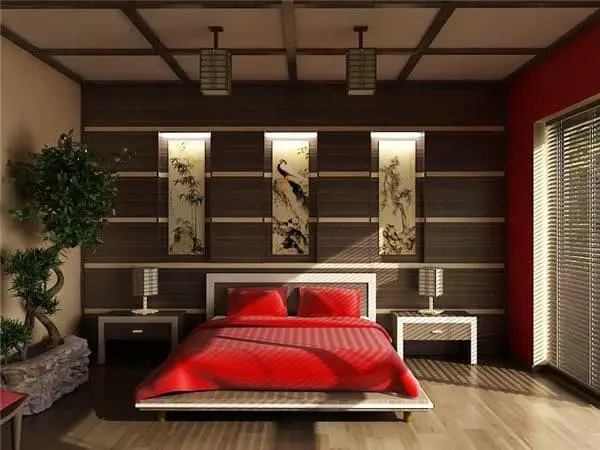
Romance and passion are synonymous with the color red, making it a prime choice for crafting an intimate atmosphere. Other warm tones like pink, peach, yellow, and orange evoke feelings of love, joy, and happiness, perfect for a bedroom setting. On the other hand, cooler shades such as lavender, blue, or green can create a calming ambiance, ideal for unwinding after a long day.
When selecting colors for your bedroom, start with a primary color and use a lighter shade of the same hue for accent walls and furniture to create visual cohesion. Experimenting with different shades will help you find the perfect tone that resonates with your personal style. Beyond wall colors, consider the other elements in your bedroom, including bedding, curtains, rugs, and artwork.
Soft, luxurious fabrics can add a touch of comfort and indulgence, while artwork featuring romantic scenes or loving moments can evoke feelings of affection. Finally, lighting plays a crucial role in setting the mood – dimly lit spaces can create a sense of intimacy and romance.
Feng shui bedroom colors for earth element.
When it comes to creating a bedroom that embodies balance and harmony, earth elements are an excellent choice. The natural, warm tones of beige, brown, khaki, and tan can help establish a sense of grounding and stability. To further enhance the ambiance, consider introducing pops of green or yellow, which will inject vibrancy and energy into the space. For a truly unique and harmonious environment, blend earthy hues with warm wood accents to create a soothing yet invigorating atmosphere.
Moreover, it’s essential to allow for the natural flow of light within the room to prevail, rather than being obstructed by darker, richer colors. By doing so, you can prevent overwhelming the senses with too many strong hues in one space.
Feng shui bedroom colors for fertility.
Incorporating feng shui colors in the bedroom can be a game-changer for couples trying to conceive. Certain hues have been linked to fertility and can create a sense of equilibrium and harmony in the space. Soft blues and greens are excellent choices, as they can bring a calming influence to the room. Blue, specifically, is believed to foster new life, while green promotes relaxation, helping couples focus on their reproductive goals.
For a more intimate atmosphere, soft pinks and peaches can be used to create a sense of calm and inviting energy. These colors are thought to stimulate fertility and encourage creativity, making them perfect for the bedroom. Finally, earthy tones like tan or brown can help establish a relaxing ambiance, fostering a nurturing environment that welcomes conception. By incorporating these feng shui colors into your bedroom design, you can create an atmosphere that nurtures both body and soul.
Feng shui bedroom colors for sleep.
Soft hues such as blues, greens, lavenders, and grays have the power to transform bedrooms into serene sanctuaries. Blues, in particular, are known for their calming effects, promoting a sense of clarity and tranquility that can aid in sleep quality. The balancing properties of green further enhance this ambiance, while lavender’s stress-reducing qualities create an ideal space for unwinding. Gray tones, meanwhile, foster a sense of peace and stillness, allowing the mind to quiet down.
Off-whites, too, can be used to infuse a room with warmth and light, yet maintain a peaceful atmosphere. When it comes to fostering restful sleep through feng shui principles, sticking to light, airy shades is key, as they create an environment that invites relaxation and promotes a deep sense of calm.
Feng shui bedroom colors for married couples.
When it comes to selecting colors for your bedroom, the choices you make can have a profound impact on the harmony and balance in your relationship. While some couples find solace in calming shades like blues and greens, others prefer earthy tones that promote security and stability. A touch of passion and energy can also be added with vibrant hues like purples or pinks. It’s equally important to avoid overly stimulating colors that might disrupt the peaceful atmosphere you’re trying to create.
By considering your individual tastes and choosing colors that you both adore, you can curate a harmonious bedroom environment that fosters a healthy and thriving relationship over time.
Feng shui bedroom colors for singles.
When it comes to decorating a singles’ bedroom, selecting colors that instill confidence and serenity is crucial. Blue, a staple in feng shui, is believed to induce relaxation, comfort, and tranquility. Other calming options include green and lavender hues, which can soothe the senses. To maintain equilibrium and harmony, it’s essential to steer clear of jarring or intense colors like red, yellow, and orange. Instead, opt for lighter shades that promote balance and peacefulness.
Soft pinks and grays can also bring a sense of warmth and coziness to the space. Moreover, incorporating natural elements such as plants and artwork can greatly enhance the room’s calming ambiance. By keeping these guidelines in mind, you’ll be well on your way to creating a serene environment that fosters inner peace and security.
What color should not be used in a bedroom?
While bright and bold colors may be stimulating in other rooms of the house, they can actually hinder relaxation in a bedroom setting. Colors such as vibrant yellows, oranges, and reds are best avoided, as they can create an overwhelming atmosphere that makes it difficult to unwind. Fluorescent shades of any color also warrant caution, as they can produce harsh, eye-straining light when used for extended periods.
On the other hand, a somber or dark ambiance is not conducive to relaxation either, with black or navy blue hues creating a mood that’s more morose than peaceful. Instead, opt for softer colors like pastel blues, grays, and greens, which can promote a calming environment. Neutral tones like whites or creams can also be effective in creating an airy and spacious feel when used thoughtfully.
Which Color gives positive energy in bedroom?
The ambiance of a bedroom can have a profound influence on the emotional state and energy levels of its occupants. While certain colors are known to evoke feelings of serenity and calmness, others can instill a sense of excitement and vitality. When selecting paint colors for your bedroom, it’s essential to choose hues that elicit an uplifting response upon entering the space. Among the most effective color options for fostering positive energy in a bedroom is yellow.
This vibrant shade has been proven to boost mood, optimism, and overall well-being. Moreover, its stimulating effects can enhance creativity, mental clarity, and even inspire innovative thinking – making it an ideal choice for home offices or creative spaces. For those seeking to create a peaceful retreat, light blue is a highly recommended color. Its calming properties promote relaxation, serenity, and harmony, making it perfect for meditation or unwinding after a long day.
Other colors that can positively influence the atmosphere of your bedroom include sage green, coral pink, and lavender. Sage green has a soothing effect, while coral pink adds warmth and optimism to the space. Lavender, with its calming and comforting properties, is particularly well-suited for creating a cozy and inviting atmosphere in the bedroom. Ultimately, the key is to select a color that brings you joy and happiness whenever you enter your sanctuary.
Your bedroom should be a place where you feel rejuvenated, inspired, and at peace.
What is the most relaxing bedroom color?
While personal preferences play a significant role in determining the most calming color palette, many individuals find solace in light, muted hues like blues, greens, and grays. These serene shades are often linked to feelings of calmness and serenity, making them an excellent choice for promoting relaxation. Pastel colors, particularly soft ones, can also create a cozy and tranquil ambiance that fosters a sense of restfulness.
On the other hand, warm colors like yellow and orange can be used to generate a cheerful and inviting atmosphere. Ultimately, the key lies in discovering a harmonious blend of colors that resonates with you and helps induce a state of restful sleep.
What color reduces stress?
Studies have long suggested that certain shades of blue possess an extraordinary ability to calm the mind and body. This is because blue has been shown to lower blood pressure and slow heart rate, both crucial components in reducing stress levels. Furthermore, blue is believed to evoke a sense of peace and tranquility, allowing individuals to release their concerns and unwind.
While blue may be the most effective color for alleviating stress, other calming hues like green or yellow can also contribute to a state of serenity and balance.
What colors make rooms feel bigger?
When it comes to creating the illusion of a larger space, color plays a crucial role. Lighter hues such as whites and beiges excel at reflecting more light into the room, effectively making the space appear more expansive. Conversely, darker tones can have the opposite effect, absorbing excess light and leaving the room feeling cramped and enclosed.
To further enhance this sense of openness, neutral shades like white, beige, grey, and taupe can blend harmoniously to create an airy and spacious atmosphere. The judicious addition of accent colors or wall art can also add depth and visual interest without sacrificing a sense of grandeur. In terms of painting walls for a larger look, it’s essential to steer clear of dark accent colors, as they can overpower the space and detract from its overall openness.
Instead, opt for light shades that promote an airy and inviting feel.
What colors make a room look smaller?
When it comes to creating the illusion of a larger space in a small room, color plays a crucial role. Lighter hues such as whites, beiges, and off-whites are often the best choice, as they reflect light and create a sense of airiness. On the other hand, darker tones like blues, greens, and grays can have the opposite effect, absorbing more light and making the room feel cramped.
Even bold colors like reds and yellows, which might seem like a good idea at first, can actually have an overwhelming impact that makes the room feel even smaller. To combat this, consider using a combination of soft pastels and neutral shades to create a sense of depth and visual interest, ultimately making your small room feel larger and brighter.
Is white a good color for a bedroom?
The adaptability of white is what makes it so compelling. When used thoughtfully in a bedroom setting, it can effectively generate a bright and airy ambiance or serve as a striking contrast to darker furniture pieces. But, if the room leans too heavily on white, it risks falling flat, appearing stark and uninviting. To circumvent this, consider introducing accent pieces or artwork featuring other hues to inject depth and warmth.
Additionally, combining white walls with softer colors like blues, greens, yellows, and grays can yield a serene atmosphere.
Is GREY color good for bedroom?
Grey is a masterclass in versatility, offering a range of aesthetic possibilities. Its calming and sophisticated nature makes it an ideal choice for crafting a serene retreat in the bedroom. The neutral hue also provides a perfect canvas for injecting personality with pops of color from accessories or artwork. Furthermore, grey’s versatility extends to harmonizing seamlessly with existing furniture and color schemes, allowing you to effortlessly coordinate your design.
Whether you lean towards a modern minimalist approach or something with a touch more warmth, grey proves an excellent selection for the bedroom, capable of accommodating diverse tastes and styles.
Conclusion
In creating a harmonious Feng Shui bedroom, the strategic application of color plays a pivotal role. By selecting hues that resonate with your personal energy and align with the principles of this ancient practice, you can craft an environment conducive to rejuvenating slumber and the free-flowing circulation of positive energies.
A palette of calming light shades, including serene blues, soothing greens, and natural earth tones, is particularly well-suited for a Feng Shui bedroom, as these colors foster a sense of relaxation and tranquility. Conversely, bolder, richer hues such as deep reds and regal purples can add a touch of drama and vitality to your design, striking a balance between calmness and stimulation.
Related Posts
When it comes to selecting the perfect color garage door to complement a yellow house, finding the right harmony is key. A mismatched combination can detract from the overall curb appeal, while a well-coordinated pairing can elevate the entire exterior design. Similarly, choosing the ideal ceiling color to pair with alabaster walls or the perfect bedding to match a gray headboard requires an understanding of how different hues interact.
By considering the 60-30-10 rule and exploring various color combinations, homeowners can create a harmonious and stylish space that reflects their personal taste.


